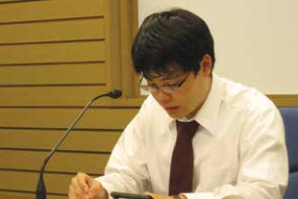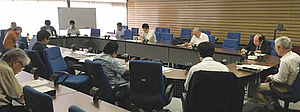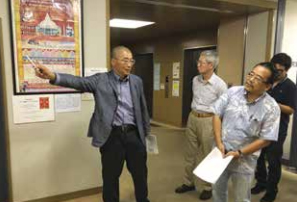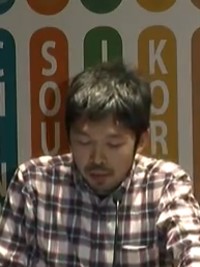
Centre of Jaina Studies Newsletter: SOAS - University of London
The 67th Annual Conference of the Japanese Association of Indian and Buddhist Studies (JAIBS)
The 67th Annual Conference of the Japanese Association of Indian and Buddhist Studies (JAIBS) was held at the University of Tokyo, on 3-4 September 2016. Although the papers on Jaina Studies were not assembled in a single session, seven presentations in total dealt with Jainism.
In The Present and Future of Jaina Studiesand Its Significance, Akihiko Akamatsu (Kyoto University) spoke on the research history of Jaina Studies. He first introduced ten points that Alsdorf raised in his lectures at the Collège de France in 1965. Akamatsu observed that since then the history of Jaina Studies has advanced in response to these issues. He examined the efforts that have been made to address each problem thus far and concluded that recent scholarship in the field has responded to these issues
In Problems on the 59th Verse of the Āptamīmāṃsā, Kiyokuni Shiga (Kyoto Sangyō University) examined the historical relationship of the Āptamīmāṃsā (ĀM) of Samantabhadra and Kumārila's Ślokavārttika (ŚV). He focused on verses ĀM 59 and ŚV 23 which have been quoted in Buddhist texts as arguments to be criticised in the context of the question of the definition of existence. His analysis concluded that the ontology of Kumārira is likely to be based on Samantabhadra
In On the Interpretation of the Aparigraha-Vrata of Jainism, Yutaka Kawasaki (Tokyo University) compared Śvetāmbara and Digambara interpretations of non-possession (aparigraha). He found that both are common in terms of their interpretation of aparigraha as 'persistence in mind' but differ with regard to the items that one is allowed to possess, especially clothes. He explored the argument in the Dharmasaṃgrahaṇi of Haribhadra, Digambara criticism and Haribhadra's counterarguments

Hiroaki Korematsu (Tōyō University)
The present author, Masahiro Ueda (Kyoto University) presented a Study on the Exegetical Literature of Śvetāmbara Jainas. Based on Malayagiri's commentary on the Vyavahārabhāṣya, using five handwritten manuscripts, he provided examples of the procedure for editing the unpublished Vyavahāracūrṇi. He analysed the relationship between Malayagiri's Ṭīkā and the Cūrṇi, and pointed out that the former is likely to have been composed as an alternative commentary of the Vyavahārabhāṣya. Kazuyoshi Hotta (Ōtani University) read a paper entitled Seven Vyasanas of Lay People: On the Śrāvakācāra Literature. In addition to the previous study in Williams' Jaina Yoga, he provided new sources and examined seven vyasanas in the Śrāvakācāra literature. He pointed out that the seven vyasanas appear only in the relatively new works, especially by Digambaras, and also in non-Jaina literature. He concluded that the concept of seven vyasanas is not unique to Jainism, since it has been popular in India in general. At a certain stage, the general idea entered in the Śrāvakācāra literature.

Participants of the 31st Conference of the Society for Jaina Studies at Ōtani University
In Early Rāso Literature Unrelated to the Biographies of Jaina Saints, Tomoyuki Yamahata (Hokkaido University of Science) looked at three stages in the history of Prakrit literature and discussed the relationship between them. The first period considered was the literature of Apabhraṃśa during the 9th to 12th centuries, preceding the era of the early Rāso literature. In this period, the tales of Jain saints were created. He pointed out that they display a characteristic form called saṃdhibandha. Also in the following period of the early Rāso literature, works on Jaina saints and doctrines were created successively. They have a form called rāsābandha, which is influenced by saṃdhi-bandha. At a later period, tales of war not related to Jainism appeared in Rāso literature, but they are not related to saṃdhibandha.
In Identification with All Things in Jainism, Kenji Watanabe (Taishō University) focused on the expression sarva-bhūta-ātma-bhūta, which is commonly found in the Dasaveyāliya-sutta and the Bhagavadgītā. He pointed out that this bahuvrīhi compound implies that all things and the self are identical, and introduced Hajime Nakamura's view that early Jaina thought had a close relationship to Vedānta and the Upaniṣaḍs. Watanabe quoted phrases in the Āyāraṅga, the Uttarajjhāyā and the Sūyagaḍaṅga as further examples of this identification.
31st Conference of the Society for Jaina Studies
On 24 September the 31st Conference of the Society for Jaina Studies was held at Ōtani University, Kyoto. Three papers were read at this conference.
In Non-idolatry of Digambara Tāraṇ Panth, Hiroaki Korematsu (Tōyō University) reported on the history and current state of the Tāraṇa school of Digambara Jainas. According to Korematsu, the Tāraṇa school is known as non-idolatrous, but the doctrine itself is attributed to authors from the early 20th century. Korematsu pointed out that in the works by Tāraṇ Svāmī, the founder of the school, there is no passage denying idolatry.
Nobuyuki Sugioka (Kindai University) presented a paper entitled Six Sentient Beings in Jainism Sattha and Daṇḍa. He pointed out that the definitions of the terms sattha (śastra in Sanskrit) and daṇḍa are different in Jainism and Buddhism. He examined the meaning of these words in the early Jaina canonal texts, especially the Āyāraṅga, the Sūyagadaṅga and the Dasaveyāliya. He analysed the classification of six sentient beings found in these texts and concluded that the cause of the difference between Jainism and Buddhism is their means of classifying living beings.
Michihiko Yajima (Komazawa University) spoke on Establishing Jaina Maṇḍala and Thīrtha: Report on the Mahāpañcakaryāṇaka Ritual. He reported on fieldwork he conducted on the rituals held in Bhilai (Chhattisgarh) and Bhopal (M.P.) in January and December 2010. These rituals were performed by Terāpanth Digambaras and aimed to reproduce the five auspicious events in the lives of the Tīrthaṅkaras. He explained the procedure of the ritual, and provided illustrations from the photo exhibition that was held at the conference.

Michihiko Yajima explaining his photo exhibition at Ōtani University
100th Annual Lecture of the Association of Philosophy, Kyoto
On 3rd November 2016 the 100th Annual Public Lecture of the Association of Philosophy, Kyoto, was held at the Kyoto University Clock Tower Centennial Hall. The lecture was open not only to members, but also to the general public. The speaker was Akihiko Akamatsu, a professor in the Faculty of Letters of Kyoto University.
The lecture was entitled Problems between Tolerance and Relativism in Jainism. After providing an overview of Jainism, Akamatsu pointed out that Jainas practice tolerance towards other schools, which can be seen in the concept of neutrality (madhyastha). Based on the dialogues in the Hīrasaubhāgya Mahākāvya and the Vijayapraśasti Mahākāvya, he demonstrated how Jainas adopted neutral or tolerant attitudes towards Islam as its powers expanded. Furthermore, he showed three doctrines that form the relativism of the Jainas, namely anekāntavāda, syādvāda and nayavāda. Introducing the conventional opinion that the principles embodied within ahiṃsā were transformed by Jaina thinkers into respect for other schools (tolerance) at the intellectual level, he concluded that it might be necessary to be tolerant in order to practice such a relativistic attitude as Mahāvīra preached on the ontology and the theory of karman.
The presentations on Jaina Studies held in Japan this year covered a broad range of topics. The circle of Japan-based researchers is expanding more and more in conjunction with related fields such as Buddhism, modern India, linguistics, etc.
Masahiro Ueda is a PhD candidate at Kyoto University. His dissertation centres on the study of the exegetical literature of the Śvetāmbara Jainas. He is currently an adjunct lecturer at Kyoto University, and is presently editing the unpublished text of the Cūrṇi commentary on the Vyavahārabhāṣya.
 Masahiro Ueda
Masahiro Ueda